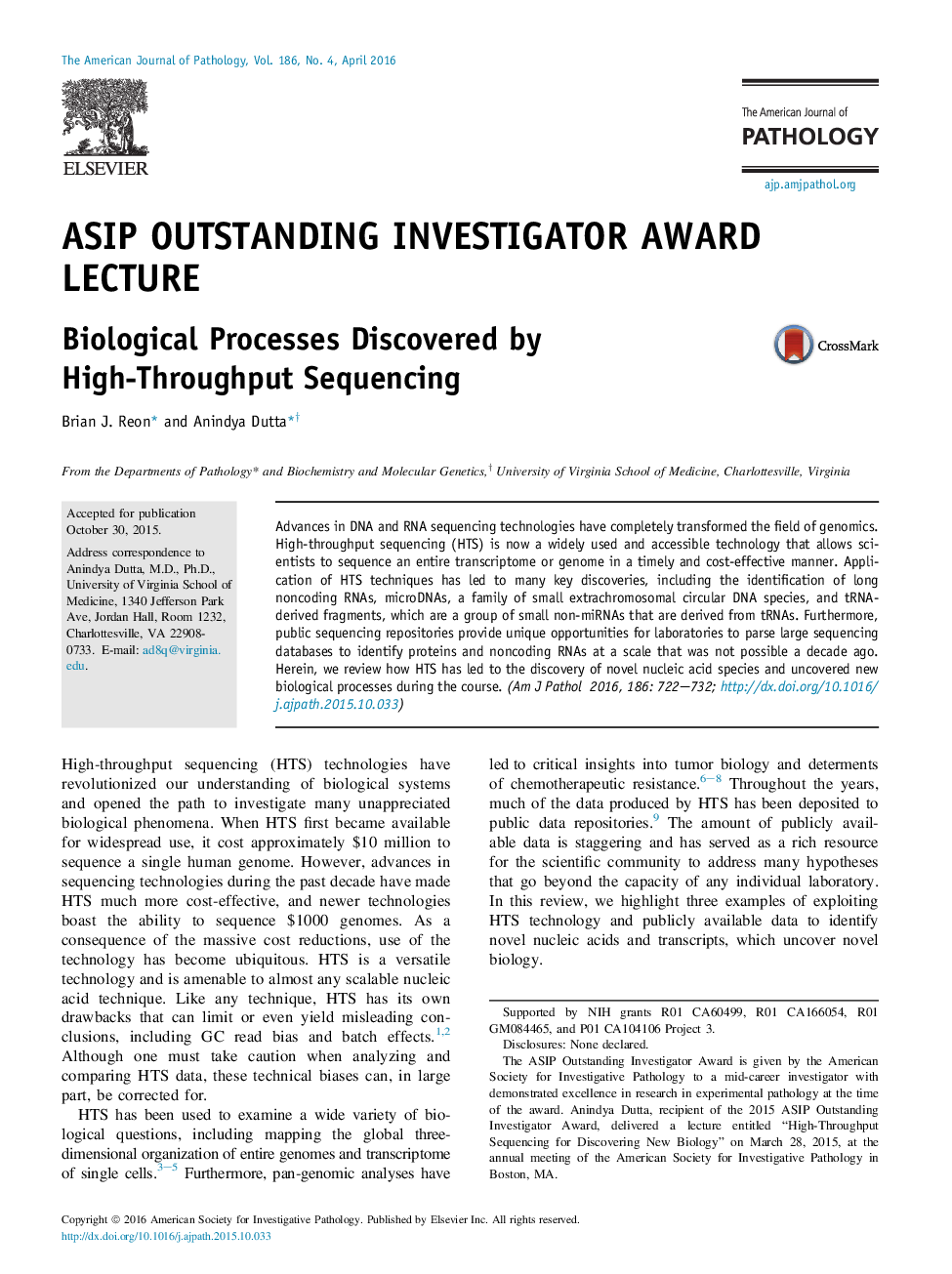| کد مقاله | کد نشریه | سال انتشار | مقاله انگلیسی | نسخه تمام متن |
|---|---|---|---|---|
| 2865727 | 1573369 | 2016 | 11 صفحه PDF | دانلود رایگان |
Advances in DNA and RNA sequencing technologies have completely transformed the field of genomics. High-throughput sequencing (HTS) is now a widely used and accessible technology that allows scientists to sequence an entire transcriptome or genome in a timely and cost-effective manner. Application of HTS techniques has led to many key discoveries, including the identification of long noncoding RNAs, microDNAs, a family of small extrachromosomal circular DNA species, and tRNA-derived fragments, which are a group of small non-miRNAs that are derived from tRNAs. Furthermore, public sequencing repositories provide unique opportunities for laboratories to parse large sequencing databases to identify proteins and noncoding RNAs at a scale that was not possible a decade ago. Herein, we review how HTS has led to the discovery of novel nucleic acid species and uncovered new biological processes during the course.
Journal: The American Journal of Pathology - Volume 186, Issue 4, April 2016, Pages 722–732
